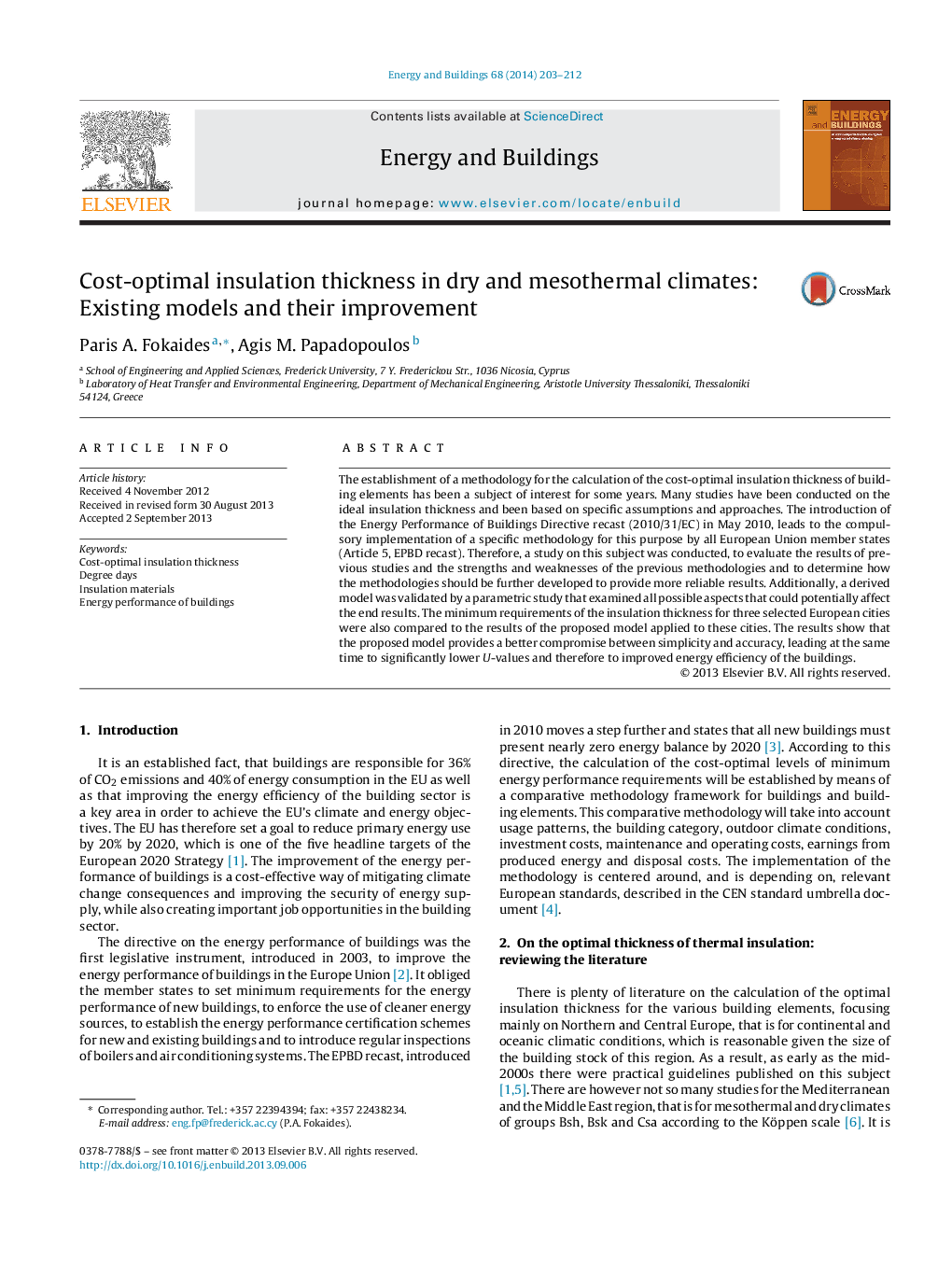| Article ID | Journal | Published Year | Pages | File Type |
|---|---|---|---|---|
| 10285979 | Energy and Buildings | 2014 | 10 Pages |
Abstract
The establishment of a methodology for the calculation of the cost-optimal insulation thickness of building elements has been a subject of interest for some years. Many studies have been conducted on the ideal insulation thickness and been based on specific assumptions and approaches. The introduction of the Energy Performance of Buildings Directive recast (2010/31/EC) in May 2010, leads to the compulsory implementation of a specific methodology for this purpose by all European Union member states (Article 5, EPBD recast). Therefore, a study on this subject was conducted, to evaluate the results of previous studies and the strengths and weaknesses of the previous methodologies and to determine how the methodologies should be further developed to provide more reliable results. Additionally, a derived model was validated by a parametric study that examined all possible aspects that could potentially affect the end results. The minimum requirements of the insulation thickness for three selected European cities were also compared to the results of the proposed model applied to these cities. The results show that the proposed model provides a better compromise between simplicity and accuracy, leading at the same time to significantly lower U-values and therefore to improved energy efficiency of the buildings.
Related Topics
Physical Sciences and Engineering
Energy
Renewable Energy, Sustainability and the Environment
Authors
Paris A. Fokaides, Agis M. Papadopoulos,
